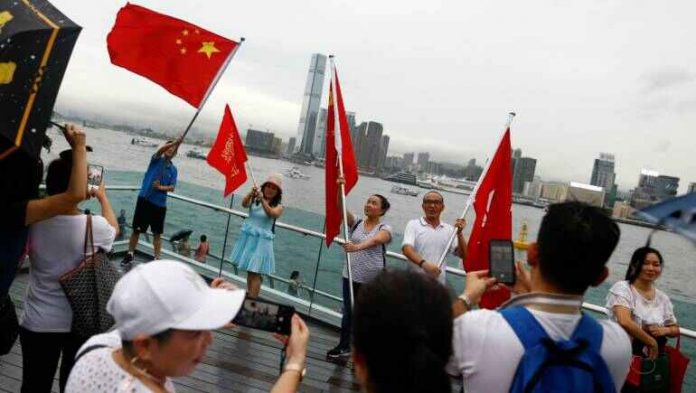Persistent weakness in the manufacturing sector backs market expectations that more policy support measures may be needed to stave off China’s worst slowdown in decades.
China’s factory activity shrank for the fifth straight month in September, and though the downturn eased off slightly the underlying trend pointed to persistent pressure on the economy as it navigates a bruising trade war with the United States.
Persistent weakness in the manufacturing sector backs market expectations that more policy support measures may be needed to stave off China’s worst slowdown in decades.
The official Purchasing Managers’ Index (PMI) was at 49.8 in September, slightly higher than 49.5 in August, data from the National Bureau of Statistics (NBS) showed. The 50-point mark separates expansion from contraction on a monthly basis.
Analysts polled by Reuters had expected the September PMI to stay unchanged from August’s reading.
Total new orders, including those from home and abroad, swung back to growth in September, in an indication of improving domestic demand, but new export orders fell for the 16th month despite improving slightly from the previous month.
Production also rose at a quicker pace in September, buoyed by the growth in new orders.
Factories continued to cut jobs in September as business uncertainties clouded the outlook. The employment sub-index was at 47.0 versus 46.9 in August.
China’s manufacturing sector has done poorly in recent months due to weak domestic demand and higher trade tariffs. Last month, growth in industrial production tumbled to its weakest in 17-1/2 years, while producer prices, a key barometer of demand, fell at its sharpest rate in three years.
Analysts expect China’s growth could slow further this quarter from a near 30-year low of 6.2% hit in April-June.
But Beijing has been relatively restrained in its monetary policy. The People’s Bank of China (PBOC) is in no rush to follow other countries in significantly loosening monetary policy but has ample options to help prop up slowing growth, its governor said last week, suggesting a cautious approach to stimulating growth.
The PBOC’s recent cut to its new one-year benchmark lending rate was far smaller than easings by the U.S. Federal Reserve and the European Central Bank.
Export-oriented manufacturers are particularly vulnerable as a nearly 15-month trade war between the world’s two biggest economies has shown no signs of ending.
Top-level trade negotiators from the two sides are expected to meet in Washington in early October to determine if they can find a truce in their trade war.
China’s services sector activity remained in expansionary territory.
The official services PMI in September was at 53.7, slightly down from August’s 53.8, but stayed well above the 50-mark that separates contraction from expansion, a separate business survey showed.
A strong services sector has helped Beijing somewhat cushion the impact from trade uncertainties and waning factory activity. However, the sector showed signs of cooling late last year as the economy slowed broadly.


